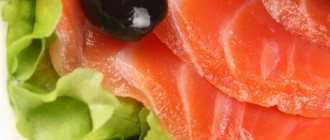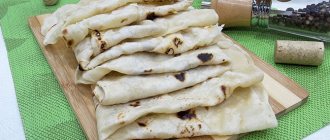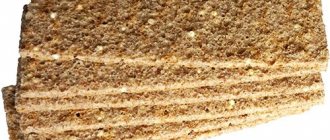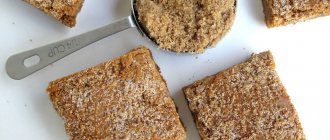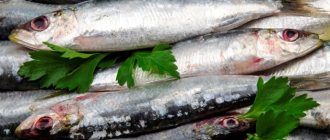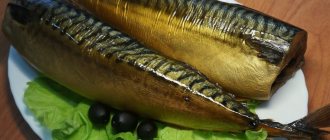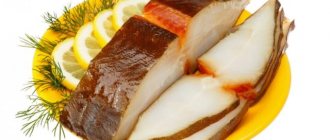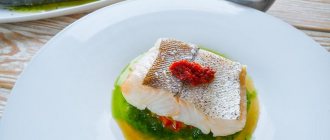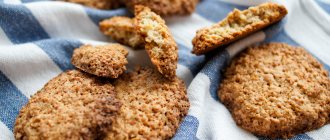Pike perch is a predatory freshwater fish. In terms of gluttony, this fish ranks second after pike among predators of fresh water bodies. Due to its high aggressiveness and mobility, its meat contains little fat.
This fish is found everywhere in Eurasia: from Eastern European rivers and lakes to fresh water bodies of the Far East. Dishes from pike perch are found in the cuisines of different nations. Due to the low fat content in the meat, this fish is considered a dietary product. The rich vitamin and mineral composition and a large amount of easily digestible protein with a low calorie content of pike perch meat allow it to be used in the preparation of fish dishes for the first feeding of infants.
General information
Pike perch is difficult to confuse with other fish. Its body is long, elongated, its head is elongated, and its jaws have many large teeth. The body has a greenish-gray color, on which dark transverse stripes are clearly visible, the abdomen is silvery. On the back of this fish there are two fins with hard rays that end in sharp spines. The shell of the pike perch's eyes is orange.
Content:
- General information
- Chemical composition
- Beneficial features
- Hazardous properties
- Consumption rate
- How to choose
- How best to store
- How to cook
- Conclusion
Pike perch lives in deep water in clean fresh waters with a clay or sandy bottom and a coastal zone overgrown with vegetation. It feeds mainly on small fish of low value, sometimes the remains of frogs and crayfish shells are found in its stomach.
Over the course of a year, pike perch gains up to one kilogram in weight, and over its entire life - up to 15-20 kg, reaching a length of up to one meter. Mature females are very fertile: during the spawning period they lay up to a million eggs. The male protects the offspring. Knowing this, many species of fish lay their eggs in pike perch nests.
Preparing pike perch for smoking
- prevents juice leakage, which makes the meat tender and soft;
- prevents soot from getting directly onto the fillet.
After cleaning, the carcasses are thoroughly wiped of excess liquid and dried with paper napkins or towels.
Ambassador
Marinade
Less commonly, liquid marinade is used for pickling. The amount of water is taken depending on the volume of fish. For brine, or brine, take 0.5 kg of salt. The pike perch is laid in layers and filled with the prepared liquid. After this, the container with the fish is sent to a cold place and kept in a salt solution for 2.5-3 hours.
Salting pike perch
Before smoking pike perch in a smokehouse at home, you should remove excess salt and dry the carcasses.
To do this, the fish is washed in water and then hung in a ventilated place to dry. Pickling can be done using the traditional method using salt, or by adding original ingredients.
Seasonings for pike perch
- Bay leaf;
- pepper mixture;
- celery;
- rosemary;
- carnation;
- thyme.
Adding a small amount of sugar will help create a beautiful crust on the surface of the carcasses. The recipe can be adjusted depending on personal taste preferences. It is recommended not to use more than 2-3 seasonings at the same time, as this may overwhelm the natural taste of the fish.
Chemical composition
Pike perch meat is an easily digestible protein product.
The absence of carbohydrates and the high water content in the product ensure the low calorie content of this fish (about 84 kcal per 100 g). Nutritional value of pike perch
| Name | Content in 100 g of raw fish, grams |
| Squirrels | 18,4 |
| Fats | 1,1 |
| Carbohydrates | 0 |
| Water | 80,0 |
Pike perch meat proteins are rich in essential amino acids for humans (isoleucine, leucine, lysine, methionine, tryptophan and phenylalanine). Fish fats are 75% mono- and polyunsaturated fatty acids that are beneficial for human health.
In addition to the main energy and plastic substances, this fish is useful for its rich vitamin and mineral composition.
Vitamins in pike perch
| Name | Content in 100 g of raw fish, milligrams |
| Vitamin A (retinol) | 0,01 |
| Vitamin B1 (thiamine) | 0,08 |
| Vitamin B2 (riboflavin) | 0,11 |
| Vitamin PP (nicotinic acid) | 2,0 |
| Vitamin C (ascorbic acid) | 3,0 |
| Vitamin E (tocopherol) | 1,8 |
Pike perch meat contains many minerals:
- macroelements (potassium, calcium, phosphorus, magnesium, sodium, chlorine, sulfur);
- trace elements (iron, iodine, manganese, fluorine, chromium, zinc, copper, cobalt, molybdenum).
Minerals in pike perch
| Name | Content in 100 g of raw fish, milligrams |
| Potassium | 280,0 |
| Phosphorus | 230,0 |
| Sodium | 35,0 |
| Calcium | 35,0 |
| Magnesium | 25,0 |
| Iron | 0,50 |
The vitamins, minerals and unsaturated fatty acids of pike perch meat have powerful antioxidant properties.
Fried pike perch loops
Parduin restaurant Brandenburg
Preparation time
60 minutes
Cooking time
35 minutes
Portions
4 people
Skill level
Expert
Recipe rating
Sending a vote...
4.0 out of 5 [1 reviews] Click the rating bar to rate this item.
Pike perch meat is distinguished by its tenderness, low fatness, but at the same time firmness, and neutral taste. We recommend the flavorful thyme-balsamic glaze, green potatoes, and the pumpernickel-polenta duo.
Compound
For zander
- 4 pike perch fillets, 125 grams each
- 4 skewers
- Rapeseed oil
- 1 raw lemon
- 1 stalk lemon grass
- 1 sprig fresh thyme
- 1 clove of garlic
- Ground white pepper
- Sea salt
For the thyme-balsamic glaze
- 3 1/2 tablespoons white wine
- 3 1/2 tablespoons white balsamic vinegar
- 1 sprig fresh thyme
- 1 trace potato starch
- White sugar
For the pumpernickel-polenta duo
- 2/3 cup milk
- Vegetable broth 2/3 cup
- 100 grams of softer wheat flour
- 400 g pumpernickel bread
- Ground white pepper
- Sea salt
- Parsley
- Chiv
- Marjoram
- Thyme
- Rosemary
For vegetable green potatoes
- 400 g potatoes
- Nutmeg
- Ground white pepper
- Sea salt
- Parsley
- Chiv
- Marjoram
- Thyme
- Rosemary
Instructions
- Green potatoes with vegetables: Peel and rinse the potatoes, cut the potatoes into pieces. Add the potatoes to the boiling vegetable broth, cover and return to a boil after 10-15 minutes, then transfer the potatoes to a separate pan. Finely chop the parsley, garlic, marjoram, thyme, rosemary and add to the potatoes and mashed potatoes. Season with salt, freshly ground white pepper and nutmeg. Get warm. The green potato vegetable should be brittle.
- Pumpernickel-polenta duo: Mix milk and vegetable broth in a one-to-one ratio until boiling and mix with farina flour. Finely chop the parsley, garlic, marjoram, thyme, rosemary. Season the polenta with salt, freshly ground white pepper and herbs to taste. Place the polenta on a baking sheet, smooth it out and cut into diamond shapes. Place one pumpernickel on top of one polenta, then top the polenta with one pumpernickel and place the last slice of polenta on top. Seal the pumpernickel and polenta duo with a rosemary stem.
- Wash the fillets, remove any small bones using small tongs or tweezers, and remove the skin. Cut each fillet in half lengthwise and place in loops. Secure the loops with skewers and finely sprinkle the fillets with flour. Place the canola oil in a saucepan and add the pike perch, grated lemon, lemongrass, thyme and half of one garlic cube; fry on both sides until golden brown. Season with salt and freshly ground white pepper and cook the fillets in the preheated oven for about one to two minutes.
- Thyme and Balsamic Vinegar Glaze: Bring white wine and balsamic vinegar to a simmer in a saucepan. Add thyme, simmer until liquid is reduced by about half. Bind with potato starch and add a pinch of sugar to taste.
- Place the pike perch fillet fried until crispy on warm plates, add green potatoes and a duo of pumpernickel and polenta, and pour over the glaze. Serve immediately.
.
Beneficial features
Regular consumption of pike perch meat, due to its chemical composition, contributes to:
- normalization of metabolism;
- improving brain activity;
- increasing visual acuity;
- harmonious development of the child;
- normal functioning of the gastrointestinal tract;
- functioning of the endocrine system (adrenal glands, thyroid gland, insulin apparatus of the pancreas, gonads);
- stimulation of the immune system;
- decreased blood viscosity;
- hematopoietic processes;
- reducing blood glucose and cholesterol levels;
- restoration processes in tissues;
- improving the condition of skin, hair and nails.
The low allergenicity of the meat of this fish allows it to be used for food allergies.
There is little fat in pike perch, which makes it possible to prepare dietary dishes from it:
- for those losing weight;
- for diabetes mellitus;
- for diseases of the digestive system;
- during or after severe infectious diseases;
- for chronic kidney diseases.
The high content of natural antioxidants in combination with the minerals necessary for their action determines the antitumor effect of pike perch meat.
Why does pike perch spoil quickly?
Pike perch, like any other fish, is a perishable product. Its meat spoils quickly because:
- Pike perch is a skinny fish. Adipose tissue inhibits putrefactive processes. Since there is practically no fat in pike perch meat, putrefactive microflora quickly spreads through the connective tissue partitions throughout the muscles of the fish.
- Pike perch meat contains a lot of water. Water is a favorable factor for the development of microorganisms.
- There are no carbohydrates in pike perch. The lack of carbohydrates means that little lactic acid is produced during the spoilage process. As a result, the acidity of the meat of this fish has a neutral or slightly alkaline reaction, which promotes the development of microflora.
To avoid getting poisoned by pike perch, you need to know how to choose it correctly.
How to reduce the calorie content of pike perch?
Raw fillet contains a minimum of fat: in such quantities it is only useful.
Fish acquires harmful calories during the cooking process, so it is recommended not to increase the calorie content of the finished dish:
- baking is carried out without mayonnaise or sauces;
- low-calorie side dishes are used (cauliflower, broccoli, rice, buckwheat).
- Recipes without frying in oil are selected.
And no matter how tasty the pike perch stewed with sauces is, it is a high-calorie dish, and even with a side dish. Let it be a rare decoration for the holiday table.
Hazardous properties
Pike perch is contraindicated in case of phenylketonuria - a hereditary fermentopathy in which the amino acid phenylalanine cannot be absorbed by people. Pike perch meat is rich in phenylalanine, so its consumption in case of phenylketonuria is fraught with toxic damage to the central nervous system.
Pike perch can be a source of toxic infections, parasitic worms (helminths), and pathogenic microorganisms that enter its meat from the water.
The most dangerous toxic infection that you can get from eating pike perch is botulism. Botulism is caused by botulinum toxin, a specific toxic substance produced by clostridia botulinum. Clostridia in pike perch are found in the form of cysts, from which they are released when the fish becomes ill, injured or dies. For active reproduction of clostridia and their release of botulinum toxin, anaerobic conditions are required, which are created by improper salting, smoking, drying or preservation of fish. Mortality from botulism is high: with untimely administration of anti-botulinum serum, up to 60% of patients die. Death occurs due to paralysis of the respiratory muscles.
The meat of freshwater fish, which includes pike perch, can become a source of 40 helminthic infestations. The most common of them include:
- wide tapeworm;
- cat fluke;
- Chinese fluke;
- hookworm;
- roundworm;
- anisakid;
- Trichinella.
The most common and dangerous worms found in pike perch include tapeworm and cat fluke.
Broad tapeworm enters the human body with pike perch meat or caviar, causing diphyllobothriasis. Several of these parasites can live in the intestines of one person at the same time. For a long time (often for several years), diphyllobothriasis is clinically manifested only by various kinds of ailments, to which a person may not pay attention. During this time, the length of the worm reaches tens of meters. During their life, tapeworms release many toxic products that are absorbed into the human blood. When the disease lasts for many years, substances secreted by the worms:
- inhibit the hematopoietic function of the bone marrow;
- disrupt sensitivity in peripheral tissues;
- have hepato- and splenotoxic effects, as a result of which the liver and spleen increase in size;
- cause severe allergic reactions.
The cat fluke, the causative agent of opisthorchiasis, also enters the human body from fish meat. From the human intestine, the parasite penetrates the bile ducts and pancreatic ducts, where it attaches itself to their walls. During their life, flukes secrete toxic substances and also physically block the bile ducts, causing obstructive jaundice. Chronic opisthorchiasis can provoke the development of liver cancer.
In addition to pathogenic microorganisms, the water in which pike perch lives may contain harmful and dangerous substances (contaminants):
- salts of heavy metals;
- radionuclides;
- pesticides;
- fertilizers;
- carcinogens.
Living in polluted water bodies of pike perch leads to the accumulation of contaminants in its meat. Eating pike perch caught in such water is dangerous due to intoxication and poisoning.
Eating low-quality pike perch meat can cause irreparable harm to health. To prevent this, you need to know how to choose, how to store and how to cook this fish correctly.
What is the difference between cold smoking and hot smoking?
If until now the algorithm for preparing fish for cold or hot smoking was practically the same (with the exception of longer salting time and drying time with the cold method), then significant differences arise.
Hot smoked pike perch is cooked at a temperature of 80-100°C degrees. This heat treatment quickly kills all microbes and brings the meat to readiness in a short time. At the same time, due to the denaturation of proteins, the meat becomes loose and soft. Large carcasses are often tied with twine to prevent them from falling apart. The shelf life of such a product does not exceed three days, so it is advisable to serve the fish from the smokehouse immediately.
To smoke pike perch with hot smoke, you need to sprinkle an even layer of alder chips on the bottom of the smoking box. A tray should be installed on top to collect fat and juice that will be released under the influence of temperature. The fish itself is placed in the upper part of the box; it can be laid out on sieves or suspended using cleaning rods. The lid of the box is tightly closed during the smoking process, and excess smoke comes out of a special hole. The dish is prepared in 20-30 minutes. The fish becomes covered with a golden brown crust and is saturated with smoke. The dish is served as a snack after the fish has completely cooled.
To smoke pike perch in a smokehouse with cold smoke, the same materials are used. But the significant difference in the process is that the smoke has time to cool to 27°C degrees before it enters the smoking box. Cold smoked pike perch can be stored for several weeks, as the smoke contains substances that can preserve food. And if during hot smoking the fish is exposed to smoke for only half an hour, then during cold smoking the process can last for more than one day.
Long-term smoking requires special responsibility from the cook, because it is necessary to accurately calculate the amount of firewood, sawdust, and your capabilities. During the first 8 hours, the smoking process cannot be interrupted, since during this period the smoke has an antiseptic effect. Fish smoked in this way retains more nutrients. The meat is elastic, with a pronounced taste. By choosing just such a recipe for cooking pike perch, you can gather all your loved ones at home to treat them to a wonderful dish.
This is interesting: Grilled pike perch
Consumption rate
The calorie content of raw pike perch meat is low, so it is classified as a dietary food. When consuming dishes from it in your diet during a diet, you should take into account that some methods of culinary processing (frying, stewing, stuffing) increase their energy value:
- raw fish – 84 kcal/100 g;
- boiling – 97 kcal/100 g;
- grilling – 119 kcal/100 g;
- stuffing – 144 kcal/100 g;
- frying – 180 kcal/100 g.
Pike perch is a good option for using fish in the diet of almost all groups of people. The approximate daily amount of fish on the menu should be:
| Contingent | Fish consumption rate per day, grams |
| Children 9-12 months | 30-50 (as puree) |
| Children 1-3 years old | 20-25 |
| Children 4-6 years old | 45-50 |
| Children over 7 years old and teenagers | 25-30 |
| Adults | 75-100 |
Fish should be in every person's diet. Fish consumption rates depend on age, gender, physical and mental activity, and physiological state. Indicative standards are not mandatory. They can be increased or decreased by other protein foods.
Pike perch baked in lavash
Stage 1
For this dish, use medium-sized fish. Clean the pieces, remove the head and entrails. Cut off the tail and all fins. Cut lengthwise down the belly and remove the ridge and any bones.
2.Stage
Lavash with semi-soft butter. Place the fish in the middle, salt, pepper a little and pour in lemon juice.
3. Stage
Wash the tomatoes and cut into four parts.
4.Stage
Place the remaining oil, tomatoes and parsley sprigs in the middle of the fish.
5. Stage
Wrap the fish in pita bread, folding all the edges so that there are no holes. Then place the pita bread in foil and close tightly.
6. Stage
Bake in the oven at 200 degrees for about 30-40 minutes.
7.Stage
Let cool slightly, cut in half and serve with a side dish of potatoes or vegetable salads.
8. Stage
Bon appetit !!!
9.Stage
Fish baked in lavash turns out very tender and tasty, tomatoes add juiciness and parsley flavor. This dish is quite simple to prepare; It goes well with any side dish or as a separate dish on its own. Pike perch can be replaced with any white fish or even fish fillet.
.
How to choose
You can catch pike perch yourself while fishing, buy it in a store or at the market. In the retail chain it can be found fresh, chilled or frozen.
To choose the right fresh or chilled pike perch, you must adhere to some rules when choosing it:
- You can only buy fish in specialized stores, supermarkets or official markets. This way you can be sure that the pike perch has passed a veterinary and sanitary examination.
- If possible, you should buy live fish from an aquarium. If this is not possible, you only need to buy whole fish.
- We need to inspect the carcass. There should be no stains, mucus, or wounds unusual for pike perch on its surface. Pike perch scales should be clean and shiny. The fish's eyes should be clear and protruding.
- You should definitely look at the gills. They should be red and shiny.
- Then you need to smell the fish. It shouldn't smell bad. Only a slight smell of mud is acceptable. A strong fishy smell is a sign of spoilage.
- After inspection, you need to press on the fish carcass. On fresh fish, the hole quickly levels out after pressing.
Frozen pike perch is rarely sold whole. Most often, already filleted meat is frozen. To buy high-quality frozen pike perch fillets, you should:
- Study the label. It should contain information about the manufacturer, weight, date of catch and freezing. If the fillet is glazed, the water content (as a percentage of weight) must be indicated on the packaging.
- Inspect the packaging. The fillet must be sealed. If the integrity of the packaging is damaged, you should refuse the purchase.
- Assess the color of the fillet. It should be white. Yellowness is a sign of repeated freezing or age of the fish.
- The glaze should cover the entire product, and the fillet should be visible through it. If the glaze layer is too thick, this may indicate improper storage of the product or dishonesty of the manufacturer.
Sudak | fish | Britannica
Walleye , any of several freshwater forage and wild fish of the family Percidae (order Perciformes) found in Europe and North America. Pike perch is more elongated and thinner than perch, but has two dorsal fins characteristic of this family. They, like perches, are carnivorous, and as adults they mainly feed on other fish.
The European walleye, or walleye (Stizostedion or Lucioperca, lucioperca; see photograph), is found in lakes and rivers of eastern, central and (where introduced) western Europe. It is greenish or greyish, usually with darker markings, and typically reaches a length of 50–66 cm (20–26 in) and weighs 3 kg (6.6 lb).
Walleye (Stizostedion lucioperca)
Specially painted for the Encyclopædia Britannica by Tom Dolan, under the direction of Lauren P. Woods, Chicago Museum of Natural History
North American walleye includes walleye (9,000). . vitreum), found in clear, cool lakes and rivers, and sauger (S. canadense), found in lakes and rather muddy rivers. Both are dark-colored fish native to eastern North America. Suger, the smaller of the two, usually does not exceed a length and weight of about 30 cm and 1 kg. Pike perch rarely weigh more than 4.5 kg and have a maximum length and weight of about 90 cm and 11 kg.
Find out more in these related Britannica articles:
.
How best to store
It is better to cook fresh or chilled fish immediately after purchase. If you need to store it for some time, then you need to do this in the refrigerator or freezer. Before storage, it is imperative to gut the carcass, clean, rinse and dry. Place the fish in a container, sprinkle with a little salt and cover with cling film.
Pike perch can be stored:
- in the refrigerator at a temperature of +4°C – no more than 48 hours;
- in the freezer at a temperature of -5°C – no more than 2 weeks;
- in the freezer at a temperature of -18°C – no more than six months.
After defrosting, further storage of pike perch (whole or filleted) is unacceptable!
How to get rid of the smell of mud
Freshwater fish usually smell like mud. Before preparing pike perch dishes, you need to get rid of this unpleasant odor. To do this, you should gut, clean, wash the carcass and place it in a container in which it fits entirely. After this, you can use one of the following methods:
- Squeeze lemon juice and dilute it with water in a 1:1 ratio. Pour the lemon solution over the inside and outside of the carcass, and place the lemon peels on top. Cover the container with cling film and put it in the refrigerator for a couple of hours.
- Dissolve one glass of coarse table salt in a three-liter jar of water. Pour this salt solution over the fish and leave it covered in film in the refrigerator for 30 minutes.
- In a two-liter container, dilute two tablespoons of table vinegar, add a tablespoon of salt, peppercorns, and bay leaf. Pour this marinade over the pike perch carcass, cover with film and refrigerate for 1 hour.
Before cooking, fish should be rinsed to remove excess acid or salt. The choice of method for getting rid of the unpleasant swamp smell depends only on the taste of the cook.
How it affects the body: benefits and harms
This is a low-fat fish variety - pike perch is suitable for most people. Its meat contains a large number of beneficial amino acids for humans, which increase immunity and are involved in the production of enzymes and hormones important for digestion.
The product should be introduced into the diet of an adult for the treatment and prevention of the following disorders:
- pike perch is useful for those who constantly experience strong physical, emotional, and mental overload. It helps to overcome nervous tension, improve the functioning of the brain and central nervous system;
- during the recovery period after serious illnesses, pike perch dishes will help restore normal weight and strength to the body;
- It is possible to introduce dishes from this fish into children's menus, since it helps the child's body develop normally. You can introduce pike perch to children little by little, starting at age 5;
- Sometimes it is acceptable to include pike perch on the menu during pregnancy and for nursing women, but you should not get carried away here; you must definitely ask your doctor for permission. The vitamins and minerals contained in the composition help the baby to develop properly and strengthen his immunity;
- For athletes and those who simply want to pump up their muscles, pike perch is indispensable because it contains a large amount of protein, which accelerates the growth of muscle mass;
- Cobalt in the product helps in the process of hematopoiesis, promotes the production of important hormones, the breakdown of carbohydrates, fats, and proteins. The use of this seafood will help overcome anemia, anemia, malfunctions of the thyroid gland, gastrointestinal tract, chronic fatigue, nervous tension;
- calcium, fluorine, phosphorus are useful for people suffering from rickets, osteoporosis, joint and muscle pain, and mental impairment. They are also suitable for older people suffering from arthrosis, arthritis, and frequent fractures.
How to cook
Pike perch has tender white meat. There are few bones in it. It is easy and quick to prepare. Pike perch meat goes well with:
- cheeses;
- baked vegetables;
- mushrooms;
- cream and sour cream;
- white and tomato sauces;
- side dishes of cereals, buckwheat, potatoes.
This fish can be prepared in any culinary way:
- boiling;
- steaming;
- stewing;
- baking (in the oven, in foil, on the grill);
- frying (in a frying pan, deep-fried);
- stuffing;
- grinding into puree or minced meat;
- drying;
- drying;
- smoking.
The method of culinary processing depends on the imagination of the cook. The main thing is that the pike perch dish is tasty and as healthy as possible.
Prepared from pike perch:
- first meal;
- second courses;
- jellied dishes;
- snacks;
- salads;
- baking.
There are a lot of recipes in which the main ingredient is pike perch meat or caviar. From pike perch meat you can prepare a simple dish that will appeal to all family members, including those on a diet: steamed pike perch cutlets. To prepare them you need to take: 400 g fish fillet, 100 g champignons, 1 chicken egg, 1 lemon, salt and spices to taste. Minced meat is prepared from fillet and mushrooms, to which egg, salt and spices are added. The formed cutlets are cooked in a double boiler.
How to properly cook pike perch while losing weight
You will have to say “no” to frying in oil, otherwise the extra calories will be deposited in the folds and visceral fat. For those who want to lose weight, low-fat cooking methods are suitable.
:Practice-tested recommendations:
- steamed, boiled, stewed fish, stewed or grilled fillet are useful;
- Regardless of the method, pike perch is good with vegetables, roots, herbs and, of course, lemon or lime;
- the carcass can be baked, stuffed with vegetables or minced fish;
- diversify the menu: aspic, juicy steamed cutlets, meatballs with low-fat sauce;
- The first courses of pike perch are very tasty: fish soup, pickles, solyanka;
- sometimes you can allow a portion of fish in batter and even a piece of kulebyaki or fish pie.
Be sure to read: We take into account the calorie content of differently prepared herring and the content of BJU during a diet, the benefits and harms for weight loss
Advice . Due to its low fat content and lack of carbohydrates, pike perch fillet should not be overcooked or boiled intensively. Otherwise, the pulp turns out dry and tasteless, loose or “rubbery” when cooked.
Possible danger and contraindications
This fish variety has few contraindications for use and inclusion in the diet:
- it should not be used by people suffering from individual intolerance to this product;
- It is prohibited for use by those who suffer from allergic reactions of food origin.
You should also not forget about basic safety rules: carefully inspect the product before purchasing, be sure to subject the product to sufficient heat treatment.
It is also believed that river varieties of fish are the main carriers of opisthorchiasis (these are flatworms that usually settle in the bodies of fish).
Fishermen say that this does not apply to predatory fish, but doctors have a different opinion about this. Buy fish from trusted people , and during cooking, subject it to thorough heat treatment to reduce the risk of infection.
Pike perch can also suffer from a kind of peptic ulcer. On the body of the fish you can see white tumors, which can reach up to 8-10 cm in diameter. The ulcers have a round shape. Such pike perch is dangerous for humans.
Usually, after detecting at least one sick individual in the waters of its habitat, disinfection is carried out to eliminate the risk of spreading the problem. But it is still worth inspecting each fish before purchasing and eating.
A few more facts about pike perch and the rules for preparing it in this video:
